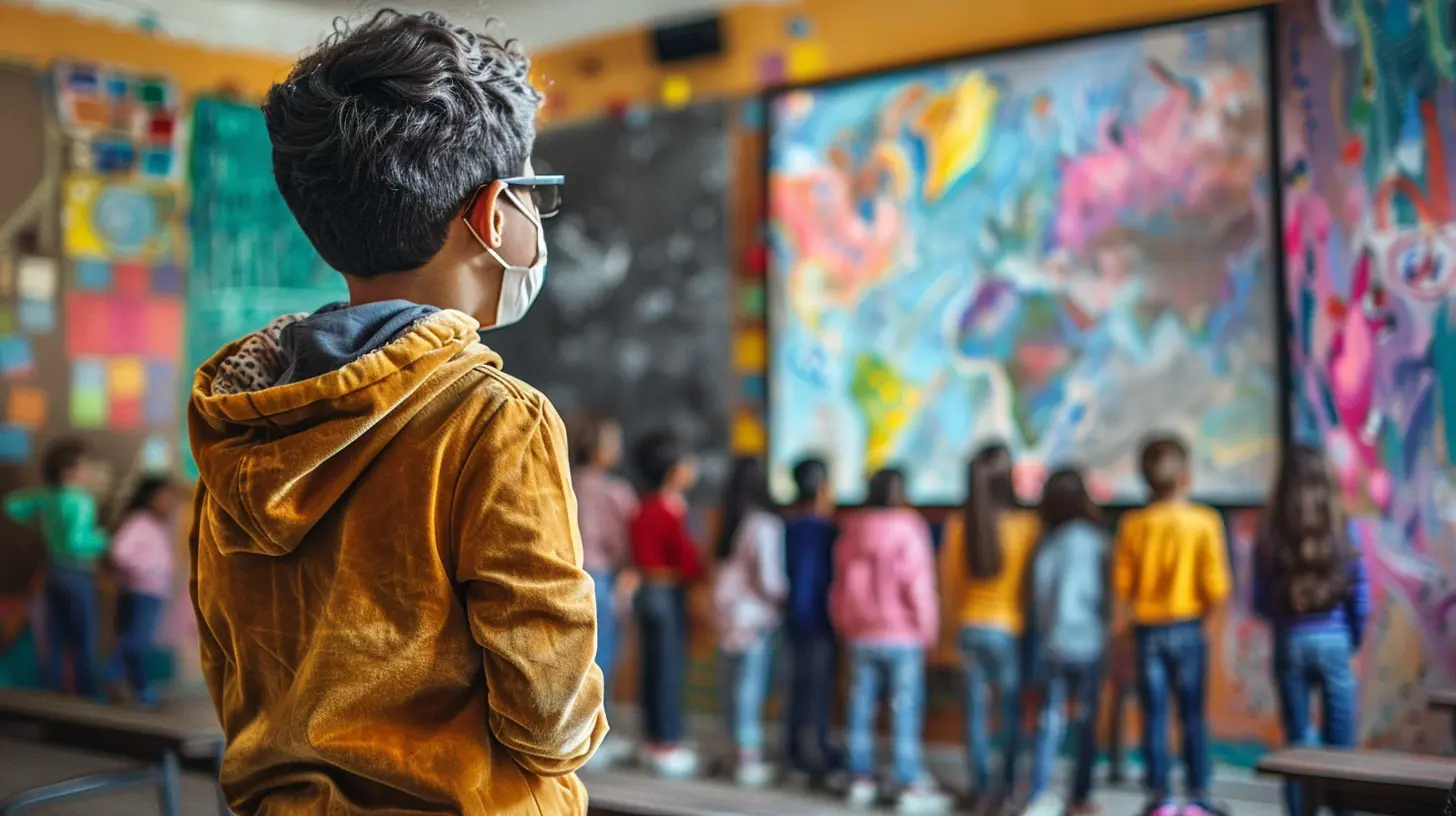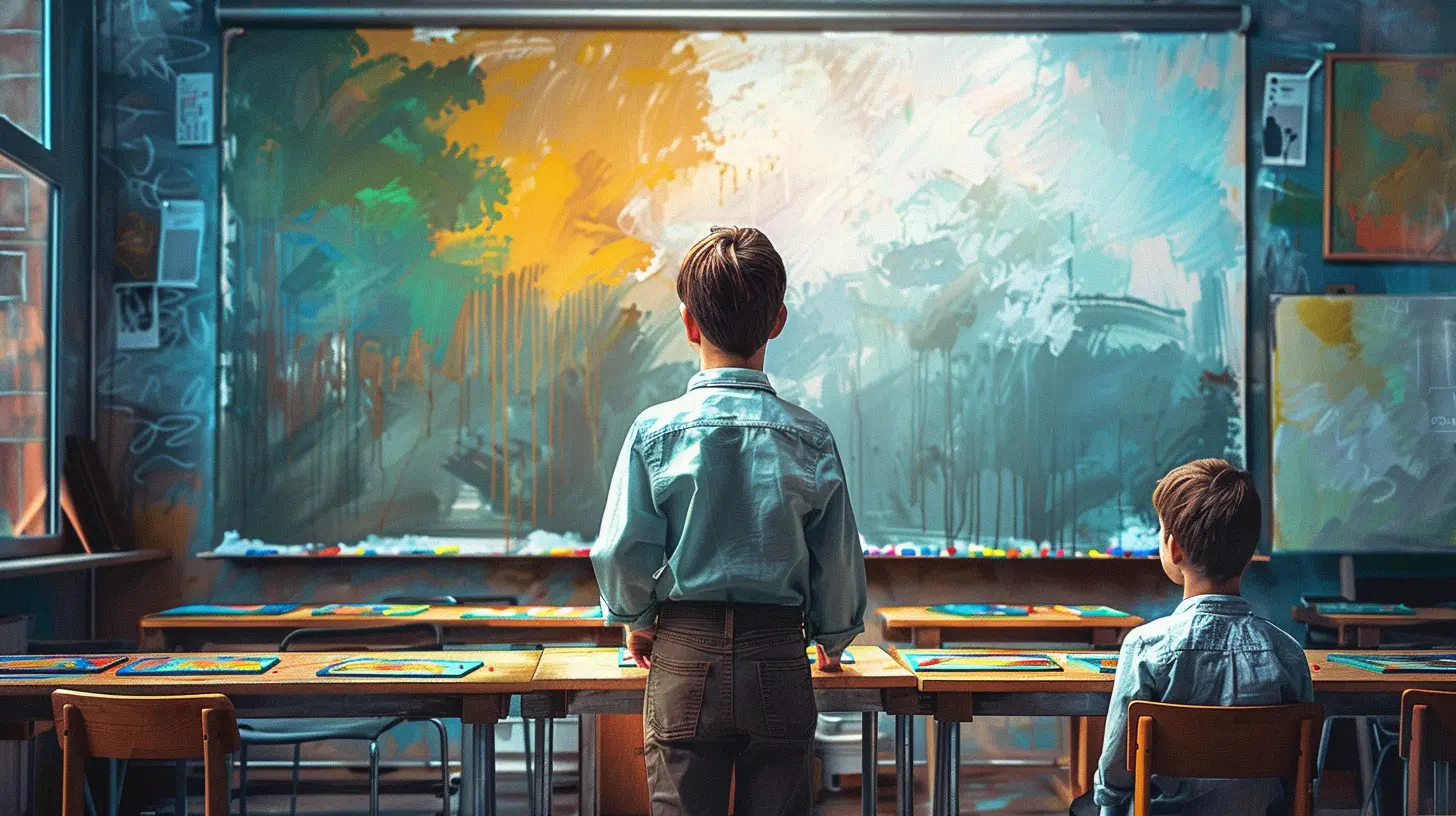The Role of Policymakers in Supporting Arts Education
4 October 2025
Let’s face it — arts education often ends up on the chopping block when school budgets get tight. Drama, music, painting, dance—they’re seen by many as just "extras." But if you’ve ever watched a child light up during a school play or lose themselves in a painting, you already know: the arts matter. The real question is, are policymakers doing enough to protect and promote arts education? And more importantly—what should their role really be?
In this article, we’re diving deep into the role of policymakers in supporting arts education. We’ll look at what they do, why it matters, what’s working, and where things need to improve.
Why Arts Education Matters More Than You Think
Let’s start with the obvious—why should anyone care about arts education in the first place?You might be surprised to hear that students involved in the arts not only perform better academically but also develop skills that last a lifetime: creativity, collaboration, critical thinking, and emotional expression. These aren’t just nice-to-haves; they’re must-haves in today’s fast-changing world.
In fact, multiple studies have shown a strong link between arts education and improved standardized test scores, better attendance, and increased student engagement. Think of the arts as the heart in the body of education. It pumps creativity and emotional intelligence throughout the entire system.
The Policymaker’s Toolbox: What Can They Actually Do?
Now, who exactly are the policymakers we keep talking about?Think school board members, state legislators, education department officials, and federal lawmakers. These are the people pulling the strings behind funding, curriculum decisions, teacher support, and educational priorities.
Here’s where it gets interesting. Policymakers have a lot more power than most people realize when it comes to influencing the arts in schools. They can:
- Pass legislation that mandates arts programs in school curriculums
- Allocate funding specifically for arts education
- Support teacher training programs for arts educators
- Create partnerships between schools and local arts organizations
- Set standards that include the arts as part of a well-rounded education
So yeah, they’re kind of a big deal.
Funding: The Lifeblood of Arts Education
Money talks, right? And when it comes to arts education, funding is often the loudest voice in the room.Let’s be real—many schools simply don’t have enough resources to run solid arts programs. Instruments, art supplies, costumes, theater lighting... it all adds up. It’s not that educators don’t value the arts; it’s that they often don’t have the means to support them.
This is where policymakers can make or break the future of arts education. By ensuring regular, dedicated funding streams, they can help schools keep the arts alive and thriving. Whether it's through state budgets, federal grants like Title IV of the Every Student Succeeds Act (ESSA), or local community partnerships, smart funding policy is essential.
Policy in Action: The Every Student Succeeds Act (ESSA)
You’ve heard of ESSA, right? If not, no worries—here’s the short version.The Every Student Succeeds Act, passed in 2015, replaced the No Child Left Behind Act and gave states more flexibility in designing their education policies. One of the standout features of ESSA is that it includes the arts in its definition of a "well-rounded education." This change, believe it or not, was a game-changer.
With the arts officially recognized, schools and districts are now eligible to use federal funds for arts-related initiatives. ESSA empowers states to emphasize the arts, but it also puts pressure on policymakers to step up and make it happen.
Bottom line? ESSA opened the door, but policymakers have to walk through it.
Policy Gaps: When the Arts Don’t Make the Cut
Here's where things start to wobble. While ESSA and similar policies provide the framework, not all states (or school districts) are using it to its full potential.Some states still view the arts as non-essential. Others rely heavily on private donations or parent-led fundraising to keep arts programs afloat. This results in highly unequal access to the arts based on a student’s zip code, race, or socioeconomic status.
This is precisely why policymakers need to not just talk the talk but walk the walk. Words in policy documents don't mean much unless they’re backed up by real action, consistent funding, and strategic planning.
Equity and Inclusion: Making Arts Accessible for All
Here’s the truth no one likes to admit: Not all kids have the same access to arts education.Students in underfunded schools—often in low-income or rural communities—are far less likely to have access to quality arts programs. It’s not just unfair; it’s a gigantic missed opportunity.
Policymakers have a responsibility to level the playing field. They can push for equity-based funding models and set standards that require all schools (not just wealthier ones) to offer arts education. Think of it like this—every kid deserves a chance to paint their own canvas, not just the ones with the resources to buy the paint.
Empowering Teachers: Policymaker Support for Arts Educators
Let’s not forget the people on the front lines—teachers. Even the best policies won’t get far without qualified, passionate arts educators to bring them to life.But guess what? Many arts teachers lack the professional development, resources, or support they need to thrive. Others are forced to teach without certification or proper training.
This is another area where policymakers can have a big impact. They can:
- Fund state-sponsored teacher training programs
- Offer incentives for schools to hire certified arts teachers
- Include arts education expertise in decision-making panels
- Create mentorship opportunities for new arts educators
By empowering teachers, we’re investing directly in the quality of arts education across the board.
Real-Life Wins: Success Stories Worth Noting
Need a little inspiration? Let’s highlight a few places where smart policy has made a big difference.California’s Proposition 28
In 2022, California passed Proposition 28, dedicating nearly $1 billion annually to arts and music programs in public schools. That’s not just pocket change—that’s transformative. It ensures that schools, especially those serving low-income students, can build or expand their arts programs with confidence.Chicago Public Schools’ Arts Education Plan
Chicago rolled out a comprehensive arts education plan that aligns curriculum, expands access, and ensures accountability. The most impressive part? They backed it up with data tracking to measure success and make adjustments as needed.These examples show that with the right policies and genuine follow-through, real change is possible.
The Role of Advocacy: How We Can All Help Policymakers Get It Right
Let’s be honest—policymakers don’t always have a background in education, let alone the arts. That’s where advocacy comes in.Parents, teachers, artists, and students need to be vocal about the importance of arts education. Whether it’s calling a legislator, showing up at a school board meeting, or just sharing a powerful story on social media, every voice matters.
The more noise we make, the harder it is for policymakers to ignore the importance of the arts.
What the Future Should Look Like
So, what should we hope (and push) for in the coming years?- More legislation that requires arts education in K-12 schools
- Dedicated funding streams at every level—federal, state, and local
- Inclusive policies that reach underserved communities
- Better data collection to measure arts education impact
- Stronger support for arts educators through training and resources
Sound ambitious? Maybe. But with committed policymakers and an engaged public, it’s absolutely within reach.
Final Thoughts
The role of policymakers in supporting arts education isn’t just important—it’s crucial. They set the tone, write the rules, and open the purse strings. Without their leadership, arts programs risk becoming afterthoughts rather than essentials.But with smart, intentional policy decisions backed by funding, training, advocacy, and equity, arts education can thrive. And when that happens, students thrive—not just as learners, but as thinkers, dreamers, and creators.
So the next time you hear someone say the arts don’t matter, point them to the policymakers who know better—and the students who prove it every day.
all images in this post were generated using AI tools
Category:
Education PolicyAuthor:

Monica O`Neal
Discussion
rate this article
1 comments
Beth Wilkins
This article beautifully highlights the crucial role of policymakers in arts education. Investing in creativity cultivates future innovators and enriches our society. Thank you for shedding light on this important issue!
October 5, 2025 at 10:23 AM

Monica O`Neal
Thank you for your thoughtful comment! I'm glad you found the article valuable in emphasizing the importance of supporting arts education.


